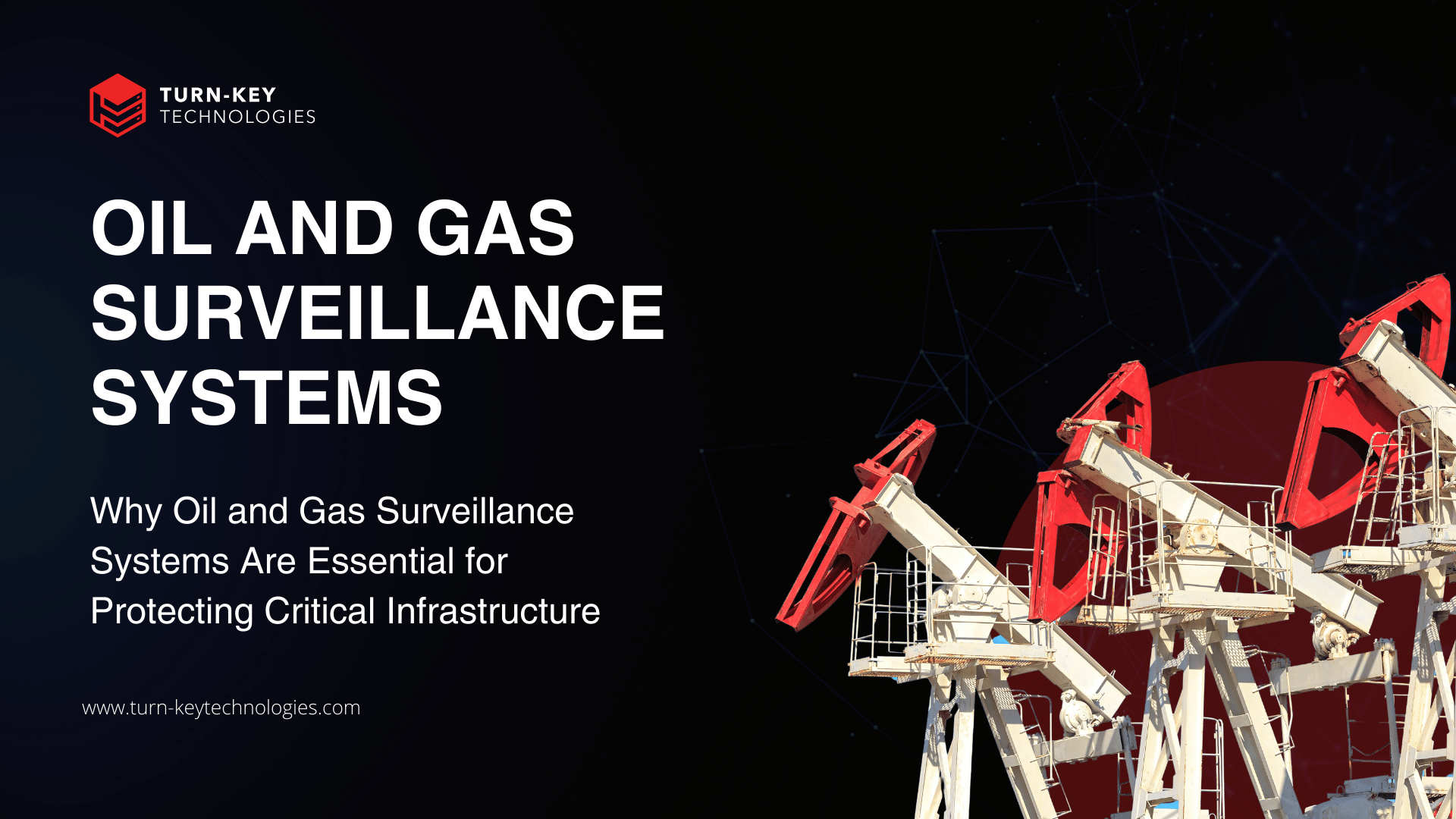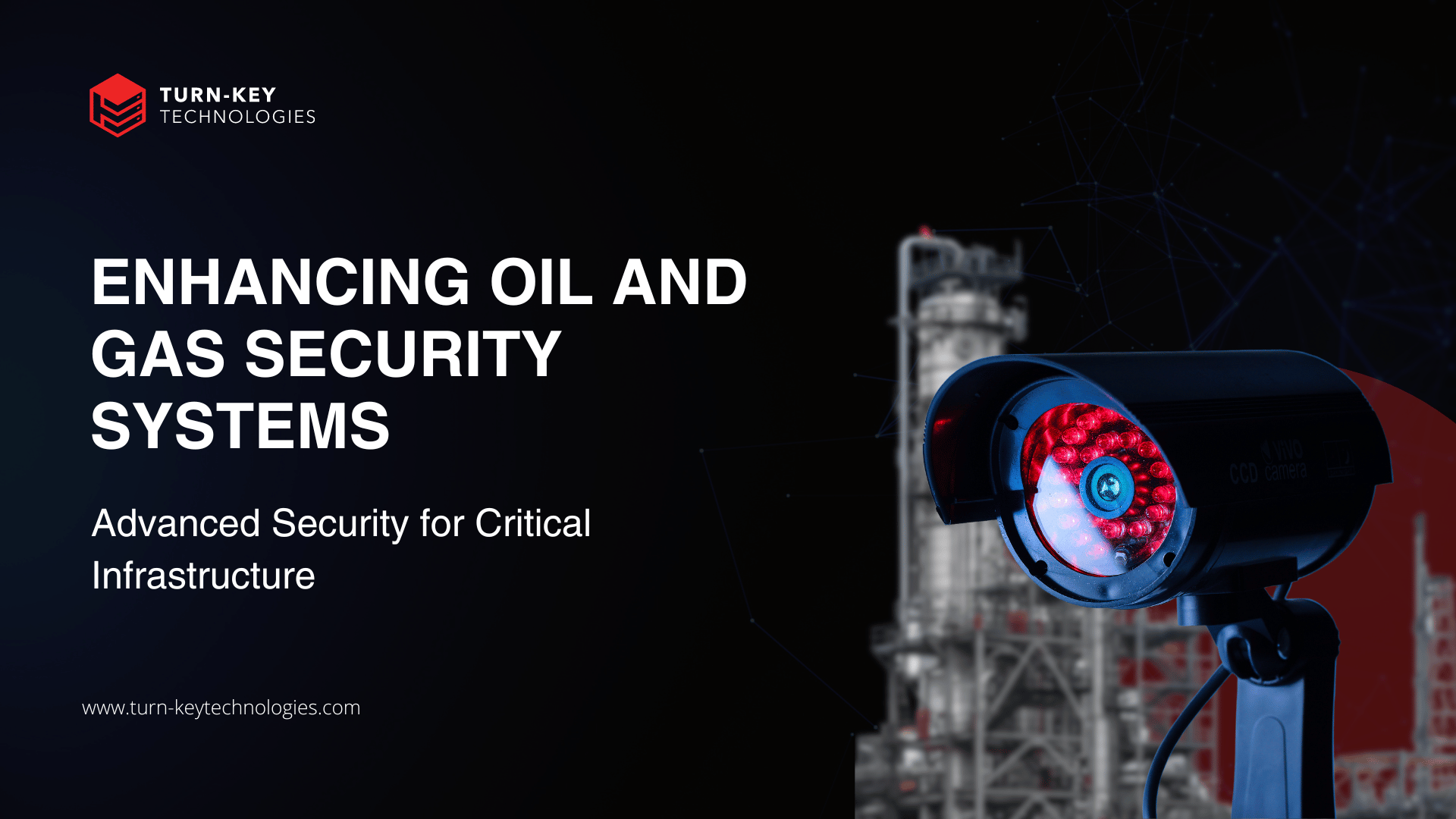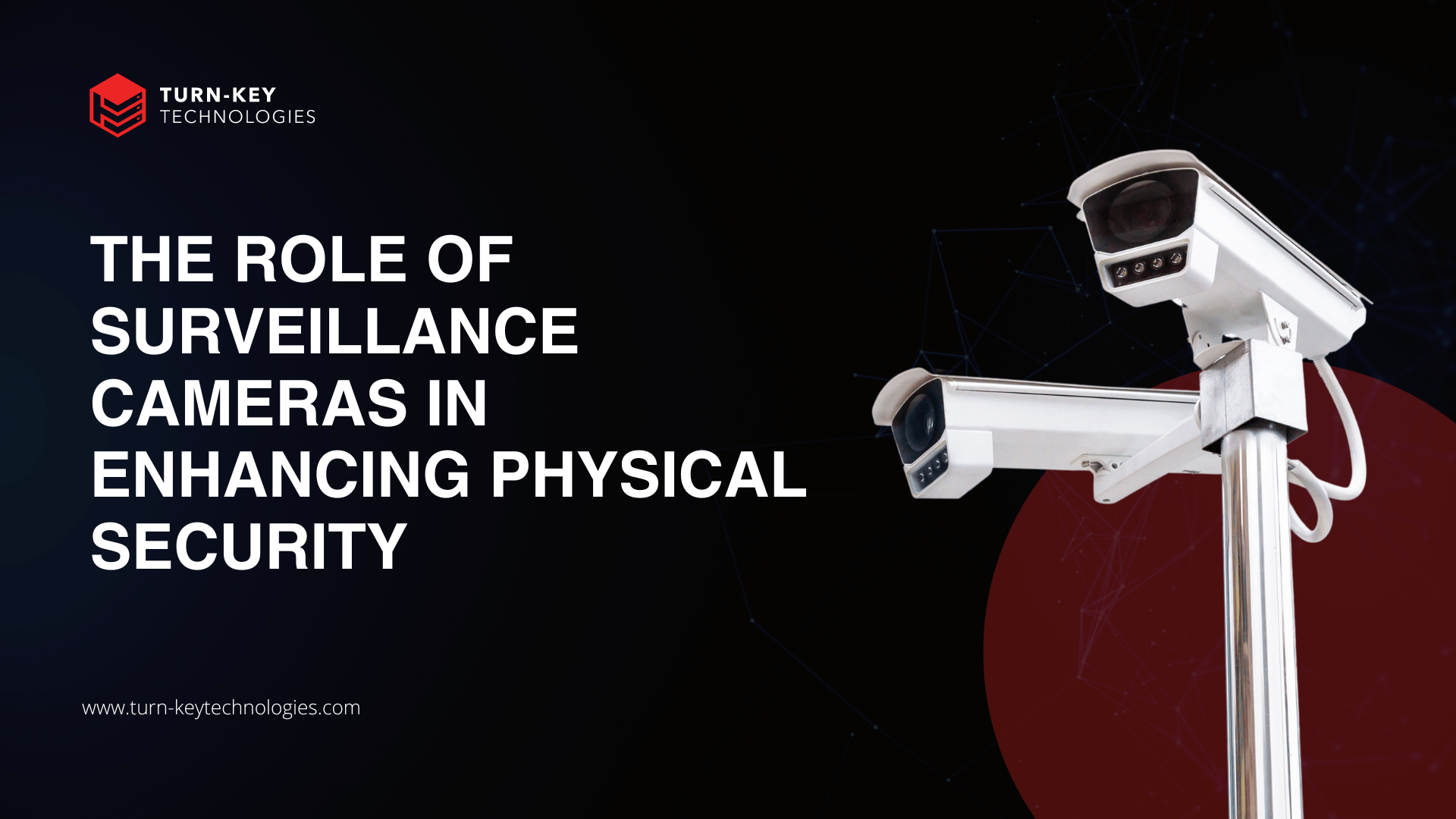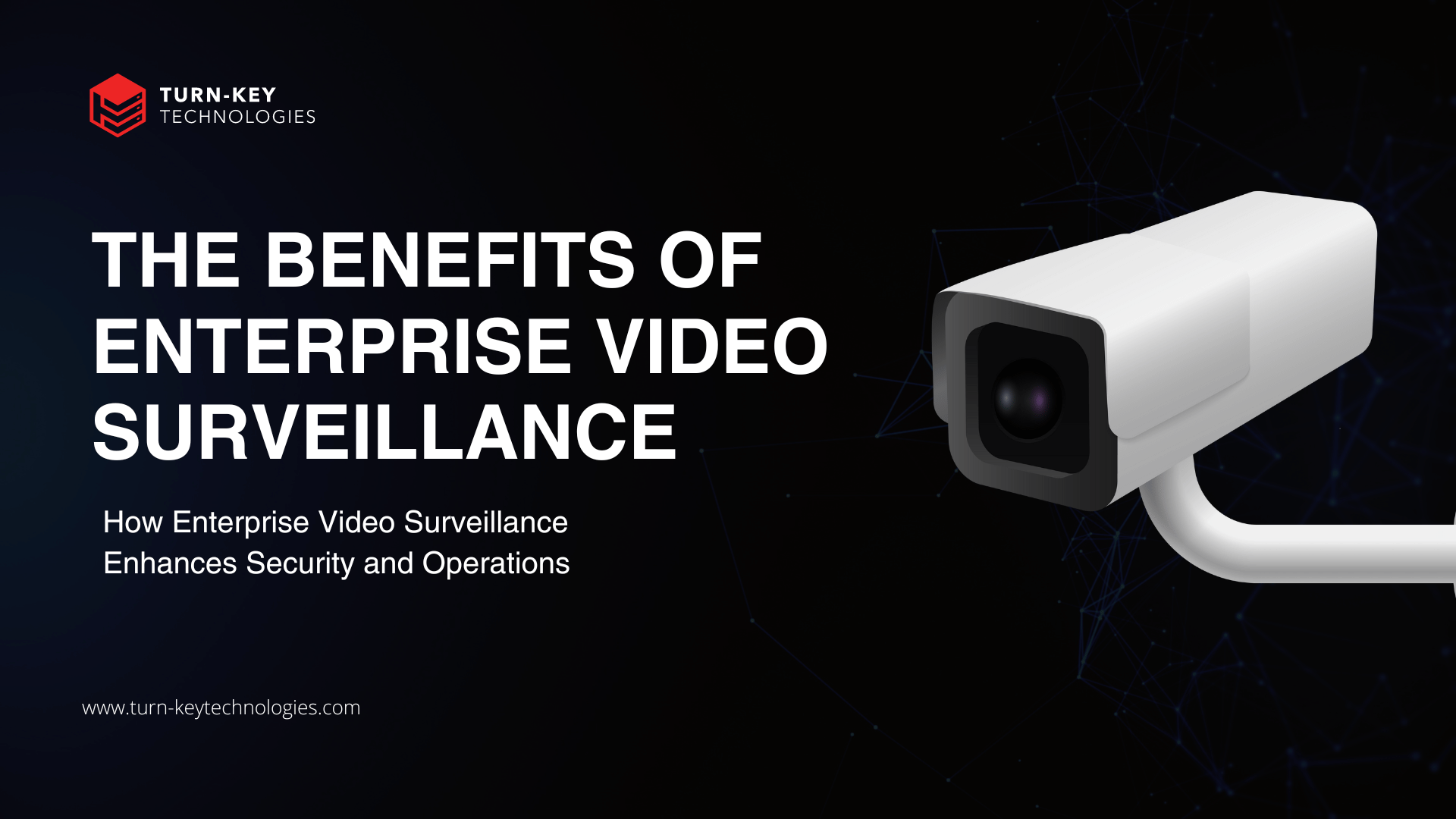Enhancing Oil and Gas Security Systems: Advanced Security for Critical Infrastructure
The oil and gas industry is a cornerstone of global energy supply and economic stability, making infrastructure security paramount. From pipelines to...
5 min read
Turn-key Technologies Staff : Sep 10, 2024 9:18:39 AM

The oil and gas industry is one of the most crucial sectors for global economic stability, but it's also one of the most vulnerable to security threats. As pipelines and facilities stretch across vast and remote areas, ensuring the security of these operations has never been more challenging. In recent years, sophisticated security systems, including advanced surveillance cameras and video monitoring solutions, have become essential tools for mitigating risks like vandalism, theft, and sabotage. With approximately 7,500 miles of pipelines crisscrossing the United States alone, securing these networks is critical to protecting both the industry and national infrastructure.
Oil and gas sites, particularly pipelines, face an array of security threats that can disrupt operations and endanger personnel. One of the most significant risks is vandalism and theft, which can cause costly delays and potential environmental disasters. Unauthorized access to pipelines, oil fields, or gas facilities can lead to intentional sabotage, creating ripple effects throughout the supply chain. Additionally, given the geopolitical importance of the oil and gas industry, terrorism poses a significant concern, especially in regions where political instability threatens these assets.
Natural disasters also add another layer of vulnerability. Earthquakes, floods, and storms can damage pipelines and infrastructure, creating opportunities for leaks or explosions if proper monitoring systems aren't in place. Therefore, oil and gas companies must prioritize site security and employ modern surveillance solutions to counter these risks.
Remote oil and gas sites present unique challenges for security teams. With expansive geographic coverage and often isolated locations, traditional security measures like physical patrols or stationing security guards may not be sufficient or feasible. This is where surveillance cameras and remote video surveillance systems step in as a critical solution.
Oil field security cameras, coupled with sophisticated video surveillance technology, enable operators to monitor large areas in real-time, even from hundreds of miles away. These systems don’t just record; they provide live video feeds, which allow security personnel to act immediately in the event of a breach. Cameras equipped with features like thermal imaging can detect movement even in low-light or adverse weather conditions, offering around-the-clock protection for oil and gas facilities. The use of video analytics further enhances security by automatically detecting unusual activities, reducing the need for constant human monitoring.
The effectiveness of oil and gas surveillance systems hinges on their ability to adapt to the industry's specific needs. Unlike standard commercial security setups, systems for oil and gas operations must cover large, often remote, areas and endure harsh environmental conditions. These surveillance systems are built to withstand extreme temperatures, dust, and moisture, ensuring reliable performance in the toughest environments.
Advanced surveillance solutions integrate various components, including high-resolution video security cameras, motion detectors, and alarm systems, providing a multi-layered approach to security. Remote video surveillance allows operators to monitor pipelines, gas sites, and critical infrastructure from centralized control centers, even in the most inaccessible locations. This capability minimizes the response time in emergencies, helping prevent disasters before they escalate.
Moreover, pipeline monitoring and surveillance solutions offer operators real-time data and insights, enabling them to detect leaks, unauthorized access, or potential damage to the infrastructure. Combining this with video surveillance cameras ensures that operators are alerted to physical threats as well as operational anomalies.
Protecting critical infrastructure within the oil and gas sector requires an integrated security approach that combines physical security, technology, and advanced monitoring systems. Oil and gas security systems are designed to safeguard pipelines, oil fields, gas facilities, and refineries from both internal and external threats. These systems are not only used for crime prevention but also play a vital role in ensuring operational safety.
Surveillance cameras are one of the key components of this infrastructure security strategy. Well-placed security cameras along pipelines and at gas sites provide real-time monitoring, allowing security teams to respond promptly to any suspicious activities. Pipeline operators rely on these video feeds to ensure that the integrity of the pipeline remains intact, minimizing the risk of accidents and service interruptions.
Pipeline security solutions are becoming more sophisticated, incorporating drones, remote monitoring, and AI-driven analytics. Drones equipped with cameras can patrol pipeline infrastructure autonomously, offering additional security coverage in remote or hard-to-reach areas. This technology significantly increases security, as drones can detect issues or anomalies that ground patrols might miss.
Remote video surveillance has transformed how oil and gas companies monitor their infrastructure. With oil and gas pipelines often located in rural or isolated regions, it is not always possible to have security personnel on-site 24/7. Remote surveillance systems allow operators to maintain continuous oversight, regardless of the location.
These systems are powered by wireless technology and cloud storage, which provides flexibility and scalability for oil and gas operations. Wireless video surveillance is particularly advantageous for monitoring pipelines and gas infrastructure that span long distances. It eliminates the need for extensive cabling and enables real-time access to video feeds from any location with internet connectivity.
For oil rigs and offshore facilities, where conditions are even more extreme, remote video surveillance provides the crucial capability to monitor operational safety from the mainland. This ensures that any hazardous situations, like equipment failures or personnel safety breaches, are quickly identified and addressed.
As security challenges in the oil and gas industry evolve, so do the solutions. Surveillance systems now incorporate cutting-edge technologies like AI, machine learning, and video analytics, which make them smarter and more effective at detecting potential threats. AI-enabled surveillance systems can analyze video feeds in real-time, identifying unusual patterns such as unauthorized personnel, suspicious movements, or environmental changes like gas leaks. This proactive approach to security means that oil and gas companies can respond to incidents faster and with more precision.
Additionally, oil and gas surveillance systems are now more integrated with other safety and security protocols. For example, video feeds from surveillance cameras can be linked with alarms, access control systems, and emergency response teams, creating a cohesive and dynamic security environment. By addressing the full range of security challenges—from theft and vandalism to equipment failures and environmental hazards—these surveillance solutions provide a comprehensive security solution for the industry.
Oil fields are often located in remote, expansive regions where traditional security measures are difficult to implement. In such environments, oil field surveillance systems are indispensable for protecting valuable assets and ensuring operational continuity. These systems employ a range of technologies, from advanced security cameras to thermal imaging, to monitor remote locations continuously.
Oil field surveillance not only enhances security but also contributes to operational efficiency. By utilizing cameras with real-time video surveillance capabilities, operators can monitor daily operations, track personnel movements, and ensure that safety protocols are followed. In the event of an emergency, such as a fire or equipment malfunction, video surveillance takes center stage by providing real-time data that helps in making immediate, informed decisions.
In many cases, oil fields span across international borders, which presents additional legal and security challenges. Implementing a comprehensive security system that includes surveillance cameras, remote monitoring, and pipeline security is essential to ensure compliance with local regulations and protect against cross-border threats.
Wireless surveillance cameras have become a game-changer for the oil and gas industry, offering flexibility, scalability, and ease of installation. Unlike traditional surveillance systems, wireless cameras can be deployed quickly in remote or rugged terrains without the need for extensive infrastructure. This is particularly beneficial for monitoring pipelines, oil rigs, and gas facilities spread across large distances.
One of the primary advantages of wireless video surveillance is the ability to monitor multiple locations from a central control room. This is invaluable in the oil and gas industry, where operations are dispersed over vast geographic areas. Wireless cameras feature high-definition video, night vision, and weatherproof designs, making them suitable for outdoor conditions in oil and gas fields.
These systems also offer enhanced scalability, allowing oil and gas companies to add or relocate cameras as needed without significant downtime or infrastructure investment. As the need for surveillance grows—whether due to new drilling operations, expanding pipelines, or heightened security threats—wireless surveillance cameras provide the agility to adapt quickly and cost-effectively.
Securing critical infrastructure in the oil and gas industry is more important than ever, requiring state-of-the-art systems and technologies to safeguard valuable assets and ensure operational integrity. By implementing a robust security strategy that includes advanced video surveillance, remote monitoring, and video analytics, oil and gas companies can effectively mitigate security risks and protect their operations.
Turn-key Technologies, Inc. (TTI) offers enterprise video surveillance solutions to protect your operations. We provide reliable security camera systems supported by a robust network, along with comprehensive support through our PAVTAC program, including ongoing training, regular check-ins, and troubleshooting. If you use Avigilon security cameras, we also offer updates on new features and conduct annual on-site inspections to ensure system performance.
Ready to enhance your security? Contact us today to get started.

The oil and gas industry is a cornerstone of global energy supply and economic stability, making infrastructure security paramount. From pipelines to...

The physical security market is experiencing significant growth, with projections indicating it will expand at a CAGR of 8.03% from 2023 to 2028,...

1 min read
Did you know that a recent industry report found that over 40% of business institutions have identified significant vulnerabilities within their...